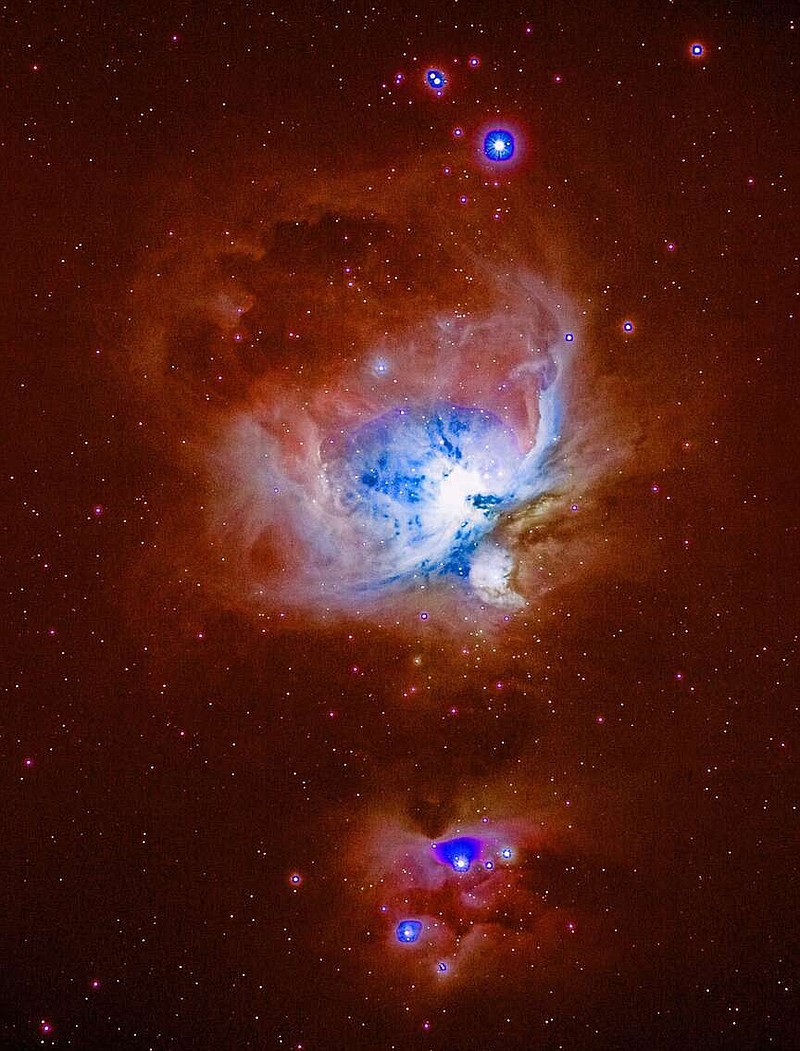This is part 2 of columns on the wonderful constellation Orion the Hunter. This constellation dominates the sky in February. There is much to say about this constellation, but I only have limited space, so I will concentrate most of the column on one of the most spectacular nebulae we can see from Earth -- M42.
M42 is the great gaseous nebula that forms part of Orion's sword. The designation "M" means that this nebula is number 42 in the catalog developed by Charles Messier, a French comet hunter of the 1700s. He didn't know what it was, but he was sure it wasn't a comet. He didn't want to keep finding a non-comet, so he made a catalog of things he could see that were not comets. The result is the famous Messier Catalog, still used today by many amateur astronomers. In fact, there are so-called Messier Marathons in which amateurs try to find all of the Messier objects, over 100 of them, in one night -- an exhausting and challenging thing to try to do.
M42 lies a little over 1300 lightyears away from Earth. Estimates vary as to its size, but it is at least 50 lightyears across -- probably bigger. It is easily seen with the naked eye by the sharp-eyed, better with binoculars, and great in amateur 'scopes of 10-to-20 inches in diameter.
Amateurs, including myself, love to photograph it because it is full of color. The color is caused by various gases being stimulated to fluoresce by the intense ultraviolet radiation emitted by the young, very hot stars that have recently formed from the gases. ['Recent' is a relative term here -- they are thought to have formed over millions of years.]
I have included an image I made of this nebula about four years ago. It was made with a 4-inch telescope and an off-the-shelf digital camera. To compensate for the Earth's rotation during the exposure, an autoguider and an equatorial mount were used to collect many frames, which were then stacked to form the final image. There was some processing in software devoted to image enhancement, but not much. I tried to preserve as much of the natural appearance as I could.
Orion is filled with astronomical wonders! These include the Horsehead Nebula, the Witch Head Nebula and examples of about every kind of star an amateur can see. These stars range from an enormous Red Giant, Betelgeuse, to a huge Blue Giant, Rigel.
This month, we are getting closer to the April total eclipse of the Sun, an eclipse that will cross right over Arkansas. My March column will be devoted to safely seeing this eclipse and photographing it if you want to do that.
Get out under a clear night sky as much as you can. It will give you a cosmic perspective on everything, and for free!
David Cater is a former faculty member of JBU. Email him at [email protected]. Opinions expressed are those of the author.

